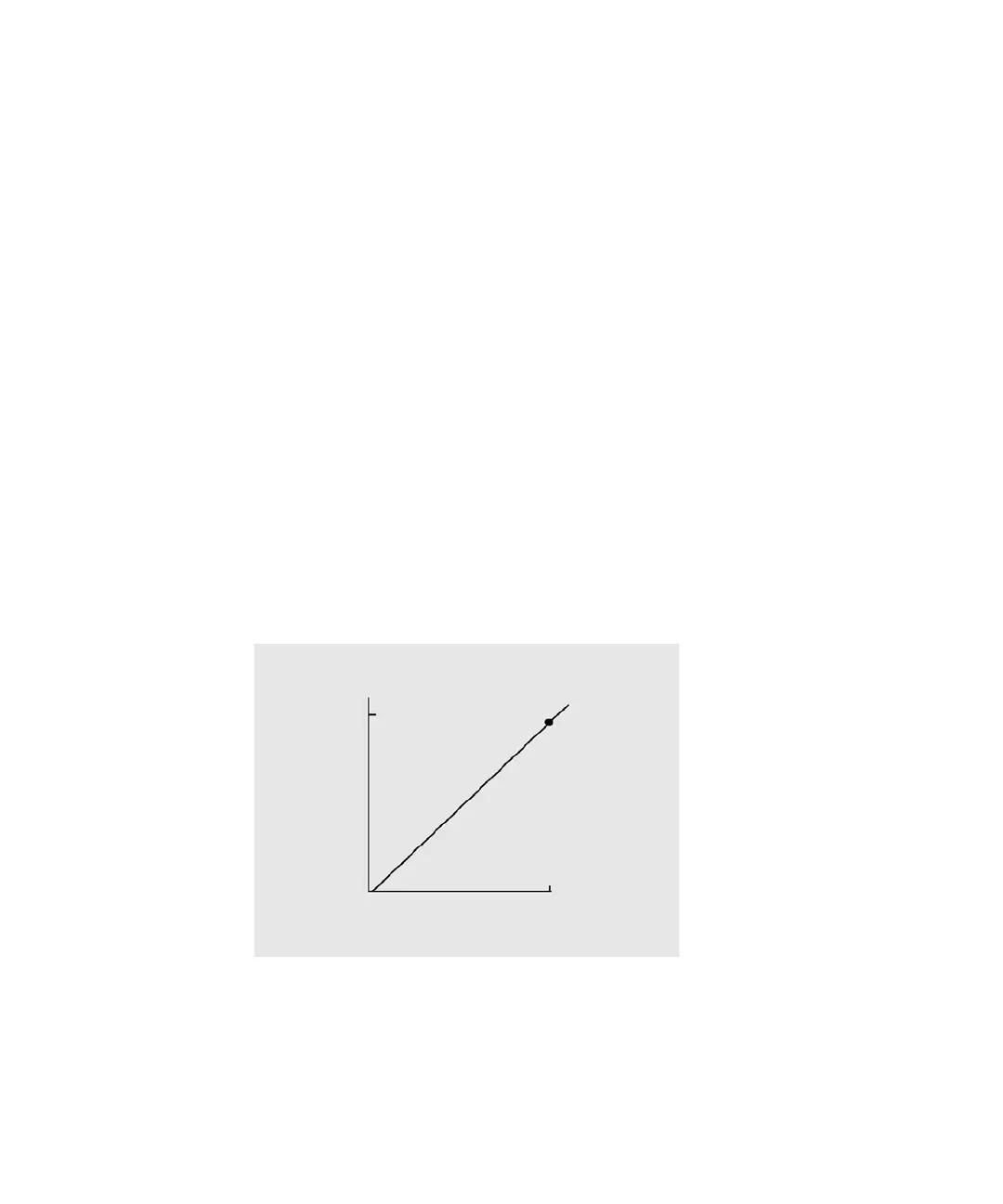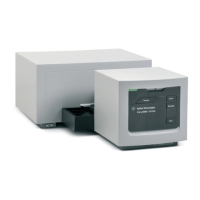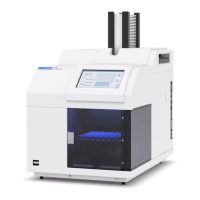Understanding Your Agilent ChemStation 147
Calibration
7
Types of Calibration
Types of Calibration
The ChemStation offers two types of calibrations, single-level and multilevel
calibrations.
Single-Level Calibration
The calibration curve shown in Figure 34 on page 147 contains one point, that
is, one level. For the single-level calibration curve, the response of the detector
is assumed to be linear over the working range of concentrations for the
samples of interest. The response factor for a given component peak is given
by the inverse of the slope of the calibration curve line through the point and
the origin. A disadvantage of single-level calibration is that the detector
response to the sample concentration is assumed to be linear and pass
through the origin on a concentration versus response plot. This is not always
true and can lead to inaccurate results.
Figure 34 Single-level calibration curve
To obtain accurate quantitative results, a calibration curve should have at
least two levels. These levels should bracket the amounts expected to be found
in the unknown samples.
&%
8dcXZciVi^dcPc\$¥aR
GZhedchZ
&%% 8Va^WgVi^dcXjgkZ

